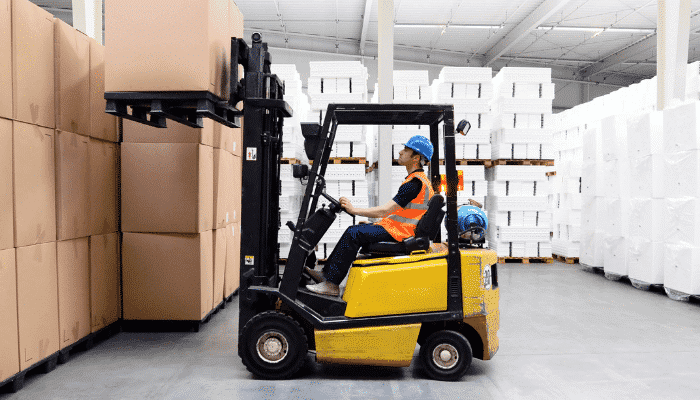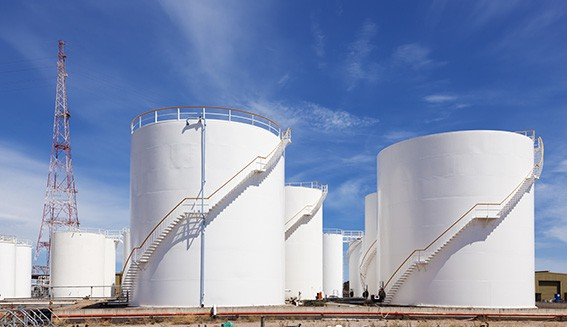Warehouse Picker (1 years diploma )
Warehouse Picker click here
Brief Job Description
Warehouse Picker in the Logistics industry is also known as Picker, Floor Staff, Warehouse Associate.
Individuals in this role need to pick items from storage. Individuals are responsible for picking items
according to an inventory list. Additional responsibilities could at times include loading and unloading
cargo, labeling, re-packaging items and documenting cargo that has been moved. The difference in tasks
performed under the picker role thus varies according to the volume of operations, however the core
function of the role is to pick items from storage and ensure they are ready to be sent out.

Personal Attributes
This job requires the individual to work well with his/her team and achieve joint goals. The individual must
be able to prioritize and execute tasks within scheduled time limits. The individual should be able to
maintain high concentration levels throughout his/her shift.
Minimum Educational Qualification &
Experience
10th Class
OR
8th Class (+ 2 years of ITI)
OR
8th Class (+ 1 year of ITI) with 1 Year of
experience relevant experience
OR
Certificate-NSQF (Loader/ Unloader – level
2) with 1 Year of experience relevant
experience
Minimum Level of Education for Training in
School
Pre-Requisite License or Training Trained in picking and packing techniques
Minimum Job Entry Age 18 Years
Last Reviewed On NA
Next Review Date NA
NSQC Approval Date
Version 3.0
Description
This unit is about carrying out housekeeping activities
Elements and Performance Criteria
Preparing for housekeeping activities
To be competent, the user/individual on the job must be able to:
PC1. inspect the area while taking into account various surfaces
PC2. identify the material requirements for cleaning the areas inspected, by considering risk,
time, efficiency and type of stain
PC3. ensure that the cleaning equipment is in proper working condition
PC4. select the suitable alternatives for cleaning the areas in case the appropriate equipment and
materials are not available and inform the appropriate person
PC5. plan the sequence for cleaning the area to avoid re-soiling clean areas and surfaces
PC6. inform the affected people about the cleaning activity
PC7. display the appropriate signage for the work being conducted
PC8. ensure that there is adequate ventilation for the work being carried out
PC9. wear the personal protective equipment required for the cleaning method and materials
being used
Carry out Housekeeping
To be competent, the user/individual on the job must be able to:
PC10. use the correct cleaning method for the work area, type of soiling and surface
PC11. carry out cleaning activity without disturbing others
PC12. deal with accidental damage, if any, caused while carrying out the work
PC13. report to the appropriate person any difficulties in carrying out your work
PC14. identify and report to the appropriate person any additional cleaning required that is outside
ones responsibility or skill
Post housekeeping activities
To be competent, the user/individual on the job must be able to:
PC15. ensure that there is no oily substance on the floor to avoid slippage
PC16. ensure that no scrap material is lying around
PC17. maintain and store housekeeping equipment and supplies
PC18. follow workplace procedures to deal with any accidental damage caused during the cleaning
process
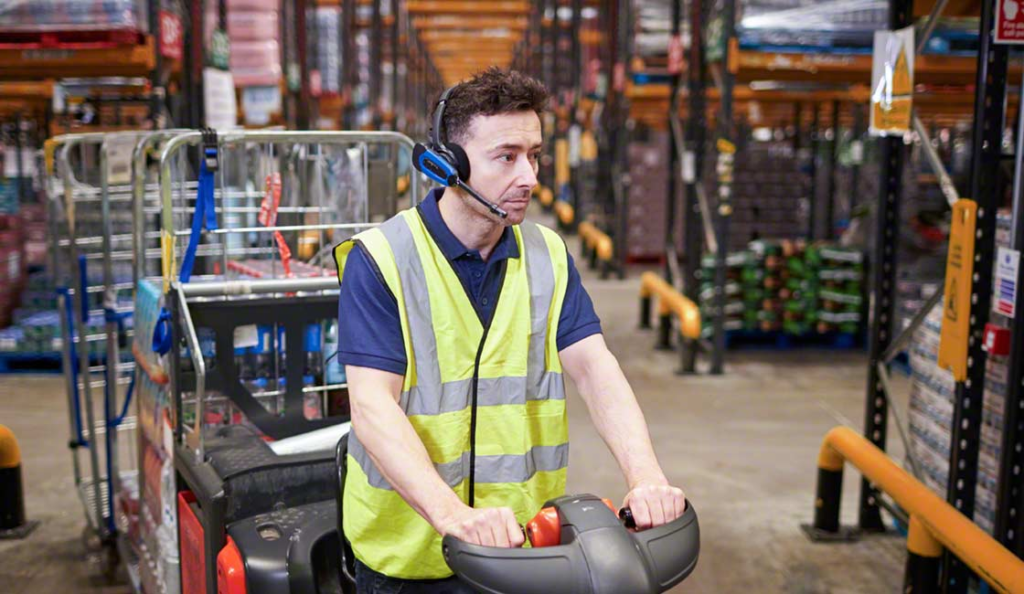
PC19. ensure that, on completion of the work, the area is left clean and dry and meets
requirements
PC20. return the equipment, materials and personal protective equipment that were used to the
right places making sure they are clean, safe and securely stored
PC21. dispose the waste garnered from the activity in an appropriate manner
PC22. dispose of used and un-used solutions according to manufacturers instructions, and clean the
equipment thoroughly
Knowledge and Understanding (KU)
The individual on the job needs to know and understand:
KU1. the levels of hygiene required by workplace and why it is important to maintain them during
your work
KU2. how to inspect a work area to decide what cleaning it needs
KU3. methods and materials that used for cleaning variety of surfaces kb4
KU4. the types of cleansing agents that are not to be mixed together
KU5. the correct method for cleaning equipment and/or machinery used during your work
KU6. the importance of personal protective equipment
KU7. appropriate personal protective equipment for the work area, cleaning equipment, tools,
materials and chemicals used
KU8. the correct sequence for cleaning the work area
KU9. the time taken by the treatment to work
KU10. the importance of following manufacturer’s instructions on cleaning agents
KU11. the most appropriate place to carry out test cleans and why this should be done before
applying treatments
KU12. the importance of applying treatments evenly and the effect of not doing this
KU13. process of cleaning the surfaces without causing injury or damage
KU14. the method to check the treated surface and equipment on completion of cleaning
KU15. procedures for reporting any unidentified soiling
KU16. procedures for disposing off waste
KU17. procedures for disposing off or storing personal protective equipment
KU18. escalation procedures for soils or stains that could not be removed
Generic Skills (GS)
User/individual on the job needs to know how to:
GS1. construct simple sentences and express ideas clearly through written communication
GS2. fill up appropriate technical forms, process charts, activity logs in required format of the
company
GS3. write simple letters, mails, etc
GS4. read and understand manuals, health and safety instructions, memos, reports etc
GS5. read images, graphs, diagrams
GS6. understand the various color codes, as per company nomenclature
GS7. express statements, opinions or information clearly so that others can hear and understand
GS8. participate in and understand the main points of simple discussions
GS9. respond appropriately to any queries
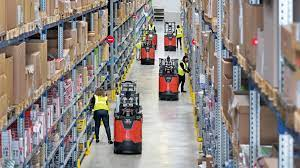
GS10. communicate with supervisor
GS11. handle cleaning equipment
GS12. handle cleaning agents
GS13. handle scrap
GS14. handle chemicals and other material
GS15. select the appropriate cleaning compound for different jobs, sections of the shop floor
GS16. suggest improvements(if any) in process based on experience
Elements and Performance Criteria
Receive Pick list and task schedule
To be competent, the user/individual on the job must be able to:
PC1. ensure reception of task schedule from supervisor and pick list from customer/company side/
supervisor
PC2. check the documents for any typos or errors and inform supervisor of any discrepancies
Obtain details on labels for items to be picked
To be competent, the user/individual on the job must be able to:
PC3. obtain labels (printed or handwritten) from the supervisor or with the help of administrative
staff for the items to be picked if required
PC4. verify if all labels received match with the items on the pick list and inform supervisor of any
errors/changes
Safety, Security and Maintenance
To be competent, the user/individual on the job must be able to:
PC5. comply with safety regulations and procedures in case of fire hazards, biohazards, etc.
PC6. wear all safety equipment including protective gear, helmets etc.
PC7. follow organization procedures with respect to security, materials handling and accidents
PC8. maintain distance between all on the floor personnel and stay within areas allotted for
warehouse personnel
PC9. park or handover pallet trolleys/carts in case of shift breaks to authorized personnel
PC10. adhere to security regulations of the company
Knowledge and Understanding (KU)
The individual on the job needs to know and understand:
KU1. procedure for obtaining pick list and generating labels
KU2. stock recording systems and procedures
KU3. knowledge of organizational procedures
KU4. role and responsibilities of colleagues on the shop floor
KU5. procedures for dealing with loss or damage to goods
KU6. risk and impact of not following defined procedures/work instructions
KU7. nature and characteristics of goods being picked
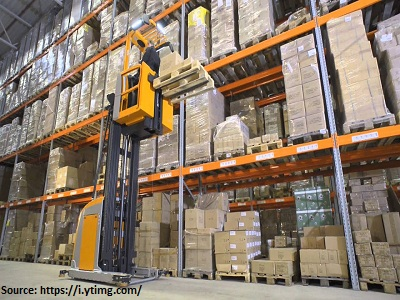
KU8. knowledge of all storage areas in the warehous
KU9. knowledge of client and products handled
KU10. knowledge of all relevant legal, safety and security procedures
KU11. the types of goods being picked or handled
KU12. the various kinds of sizes and appropriate storage methods for products
KU13. usage of stock recording procedures/method
KU14. types of workplace hazards that one can encounter on the job
KU15. how to handle the different equipment for picking goods such as picking trolley, hand pallet
trucks etc.
Generic Skills (GS)
User/individual on the job needs to know how to:
GS1. fill in appropriate forms for any accidents/damages
GS2. re-write illegible labels in case required
GS3. read labels and understand the codes as per company manuals/operating procedure
GS4. read and understand safety instructions/labels such as fragile or heavy
GS5. communicate with supervisors and peers
GS6. provide advice and guidance to juniors and peers
GS7. determine items that are damaged/require replacement
GS8. adjust according to volume, capacity and manpower needs during peak and non-peak hours
GS9. Prioritize and execute tasks within the scheduled time limits
GS10. Suggest methods to improve efficiency of Picking process
GS11. Identify errors/damages during Picking process
GS12. Identify solutions for minor issues that delay the picking process
GS13. Ability to identify products required to be picked
GS14. Ability to assess the products that require further packing
GS15. basic mathematical operations such as addition, subtraction, multiplication and division
GS16. ability to concentrate on task at hand and complete it without errors
GS17. maintain integrity with respect to company property and time
GS18. communicate with people in a form and manner and using language that is open and
respectful
GS19. resolve any difficulties in relationships with colleagues or get help from an appropriate
person, in a way that preserves goodwill and trust
GS20. take responsibility for completing ones own work assignment
GS21. take initiative to enhance/learn skills in ones area of work
GS22. learn from experience in a range of settings and scenarios
GS23. reflect and act upon ones learning
GS24. be open to new ideas and ways of doing things
GS25. develop personal goals in alignment with organization and work towards achieving set
targets
GS26. avoid absenteeism
GS27. act objectively , rather than impulsively or emotionally when faced with difficult/stressful or
emotional situations
GS28. work in a disciplined environment
GS29. be punctual
Description
This OS unit is about performing picking of goods that will go out of the warehouse
Elements and Performance Criteria
Locating the storage bays according to the task schedule and pick list
To be competent, the user/individual on the job must be able to:
PC1. ensure items on the pick list are for the right warehouse/storage area
PC2. locate the appropriate storage bays for items on pick list
PC3. locate the appropriate storage shelves and locate items to be picked
PC4. check if goods require any further packing and hand over the same to packer and collect
once packing completed
PC5. if required obtain supervisors approval for handing over goods to packer
Picking the packages as per the pick list

To be competent, the user/individual on the job must be able to:
PC6. apply picking methods specified by the organizational procedure for the type of goods and
volume of goods to be picked
PC7. perform picking- by removing goods from the appropriate shelves, storage space into
containers or pallets to prepare for loading
PC8. verify all items are labeled and packed appropriately
PC9. identify any errors occurring during the inbound picking/storage process such as damages
and misplaced items
PC10. notify the supervisor of any damages for potential fixes
PC11. notify administration for any additional orders that need to be placed to replace
misplaced/irreparable items
PC12. incase number of items are less than required report to supervisor immediately and halt
picking till issue is resolved
PC13. verify all items on the pick list are picked and are in deliverable condition
PC14. fill out appropriate administrative forms as required by the company in case of accidents,
damages, errors etc
Safety, Security and Maintenance
To be competent, the user/individual on the job must be able to:
PC15. comply with safety regulations and procedures in case of fire hazards, biohazards, etc
PC16. wear all safety equipment including protective gear, helmets etc.
PC17. follow organization procedures with respect to security, materials handling and accidents
PC18. maintain distance between all on the floor personnel and stay within areas allotted for
warehouse personnel
PC19. adhere to security regulations of the company
Knowledge and Understanding (KU)
The individual on the job needs to know and understand:
KU1. stock recording systems and procedures
KU2. knowledge of organizational procedures
KU3. role and responsibilities of colleagues on the shop floor
KU4. procedures for dealing with loss or damage to goods
KU5. risk and impact of not following defined procedures/work instructions
KU6. nature and characteristics of goods being picked
KU7. knowledge of all storage areas in the warehouse
KU8. knowledge of client and products handled
KU9. knowledge of all relevant legal, safety and security procedures
KU10. organization procedure for handling different types of goods such as fragile, heavy, loose etc
KU11. roles and responsibilities of different colleagues on the shop floor
KU12. procedures for dealing with loss of damage to goods
KU13. risk and impact of not following defined procedures/work instructions
KU14. escalation matrix for reporting identified problems
KU15. implications of poor performance/high rate of accidents/slow rate of picking
KU16. the types of goods being picked or handled
KU17. the various kinds of sizes and appropriate storage methods for productis
KU18. application of various picking techniques that can be used according to the types of storage
situations
KU19. usage of stock recording procedures/methods
KU20. types of workplace hazards that one can encounter on the job
KU21. how to handle the different equipment for picking goods such as picking trolley, hand pallet
trucks etc.
KU22. company codes/labels for storage bays and goods

Generic Skills (GS)
User/individual on the job needs to know how to:
GS1. fill in appropriate forms and documents
GS2. re-write illegible labels in case required
GS3. read labels and understand the codes as per company procedures
GS4. read and understand handling instructions/labels such as fragile or heavy
GS5. read and understand companys safety and operating procedures
GS6. communicate clearly with supervisors and peers
GS7. provide advice and guidance to peers & juniors
GS8. determine items that are damaged/require replacement
GS9. adjust according to volume, capacity and manpower needs during peak and non-peak hours
GS10. prioritize and execute tasks within the scheduled time limits
GS11. suggest methods to improve efficiency of picking process
GS12. identify errors/damages during picking process
GS13. identify solutions for minor issues that delay the picking process
GS14. ability to identify products required to be picked
GS15. ability to assess the products that require further packing
GS16. basic mathematical operations such as addition, subtraction, multiplication and division
GS17. ability to concentrate on task at hand and complete it without errors
GS18. maintain integrity with respect to company property and time
GS19. communicate with people in a form and manner and using language that is open and
respectful
GS20. resolve any difficulties in relationships with colleagues or get help from an appropriate
person, in a way that preserves goodwill and trust
GS21. take responsibility for completing ones own work assignment
GS22. take initiative to enhance/learn skills in ones area of work
GS23. learn from experience in a range of settings and scenarios
GS24. reflect and act upon ones learning
GS25. be open to new ideas and ways of doing things
GS26. develop personal goals in alignment with organization and work towards achieving set
targets
GS27. avoid absenteeism
GS28. act objectively , rather than impulsively or emotionally when faced with difficult/stressful or
emotional situations
GS29. work in a disciplined environment
GS30. be punctual
Description
This unit is about performing post picking activities
Elements and Performance Criteria
Checking picked items for errors
To be competent, the user/individual on the job must be able to:
PC1. identify any errors/discrepancies in items picked such as damages or misplacement
PC2. notify supervisor of any damages for those items that need fixes
PC3. notify administration for any additional orders that need to placed to replace
misplaced/irreparable items
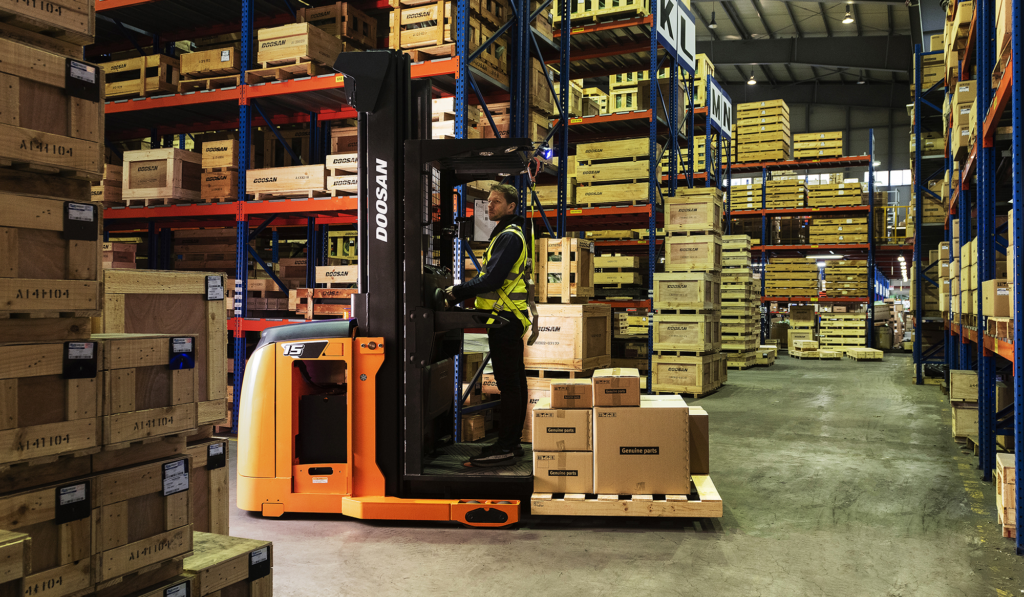
Identify items that require additional packing
To be competent, the user/individual on the job must be able to:
PC4. identify items that require further packing
PC5. determine type of packing required for item according to nature such as wooden packing,
carton etc
PC6. hand over items for packing to relevant personnel
PC7. label items according to pick list requirements
Assist with Loading and report status of inventory picked to supervisor
To be competent, the user/individual on the job must be able to:
PC8. assist with loading items into transportation truck or loading bay if applicable/necessary
PC9. report the status of inventory that has been damaged/misplaced
PC10. report the status of inventory that has been successfully picked and stored
PC11. inform the supervisor of any difficulties due to task loads or time limits
PC12. fill out administrative forms and complete all organizational formalities for
damages/accidents that occurred post-picking
PC13. record the inventory details reported in the individual log books
Safety, Security and Maintenance
To be competent, the user/individual on the job must be able to:
PC14. comply with safety regulations and procedures in case of fire hazards, biohazards, etc
PC15. wear all safety equipment including protective gear, helmets etc
PC16. follow organization procedures with respect to security, materials handling and accidents
PC17. maintain distance between all on the floor personnel and stay within areas allotted for
warehouse personnel
PC18. park or handover pallet trolleys/carts in case of shift breaks to authorized personnel
Knowledge and Understanding (KU)
The individual on the job needs to know and understand:
KU1. organizational procedures for stock recording and picking
KU2. recognize types of items that require packing
KU3. different methods of recording information
KU4. various documents that need to be maintained
KU5. company procedure for filling/maintaining up the documents
KU6. procedures for reporting to the appropriate authority
KU7. procedures for recording damage, breakages etc
KU8. reporting incidents where standard operating procedures are not followed
KU9. the importance of complete and accurate documentation
KU10. roles and responsibilities of different colleagues on the shop floor
KU11. risk and impact of not following defined procedures/work instructions
KU12. escalation matrix for reporting identified problems
KU13. types of organizational documentation regarding codes followed, processcharts, operating
procedures etc. and importance of the same
KU14. the types of goods being handled
KU15. the various kinds of packing for items according to their type
KU16. application of various methods of pre-packing for goods
KU17. how to identify damages to goods and potential fixes
KU18. usage of stock recording systems
KU19. types of workplace hazards that one can encounter on the job
KU20. company codes/labels for storage bays and goods
Generic Skills (GS)
User/individual on the job needs to know how to:
GS1. fill in appropriate forms for any accidents/damages
GS2. re-write illegible labels in case required
GS3. read labels and understand the codes as per company manuals/operating procedure
GS4. read and understand safety instructions/labels such as fragile or heavy
GS5. communicate with supervisors and peers
GS6. provide advice and guidance to juniors and peers
GS7. prioritize and execute tasks within the scheduled time limits
GS8. suggest methods to improve efficiency of picking process
GS9. identify errors/damages during picking process
GS10. prioritize and execute tasks within the scheduled time limits
GS11. suggest methods to improve efficiency of picking process
GS12. identify errors/damages during picking process
GS13. identify solutions for minor issues that delay the picking process
GS14. ability to identify products required to be picked
GS15. ability to assess the products that require further packing
GS16. basic mathematical operations such as addition, subtraction, multiplication and division
GS17. ability to concentrate on task at hand and complete it without errors
GS18. maintain integrity with respect to company property and time
GS19. communicate with people in a form and manner and using language that is open and
respectful
GS20. resolve any difficulties in relationships with colleagues or get help from an appropriate
person, in a way that preserves goodwill and trust

GS21. take responsibility for completing ones own work assignment
GS22. take initiative to enhance/learn skills in ones area of work
GS23. learn from experience in a range of settings and scenarios
GS24. reflect and act upon ones learning
GS25. be open to new ideas and ways of doing things
GS26. develop personal goals in alignment with organization and work towards achieving set
targets
GS27. avoid absenteeism
GS28. act objectively , rather than impulsively or emotionally when faced with difficult/stressful or
emotional situations
GS29. work in a disciplined environment
GS30. be punctual

